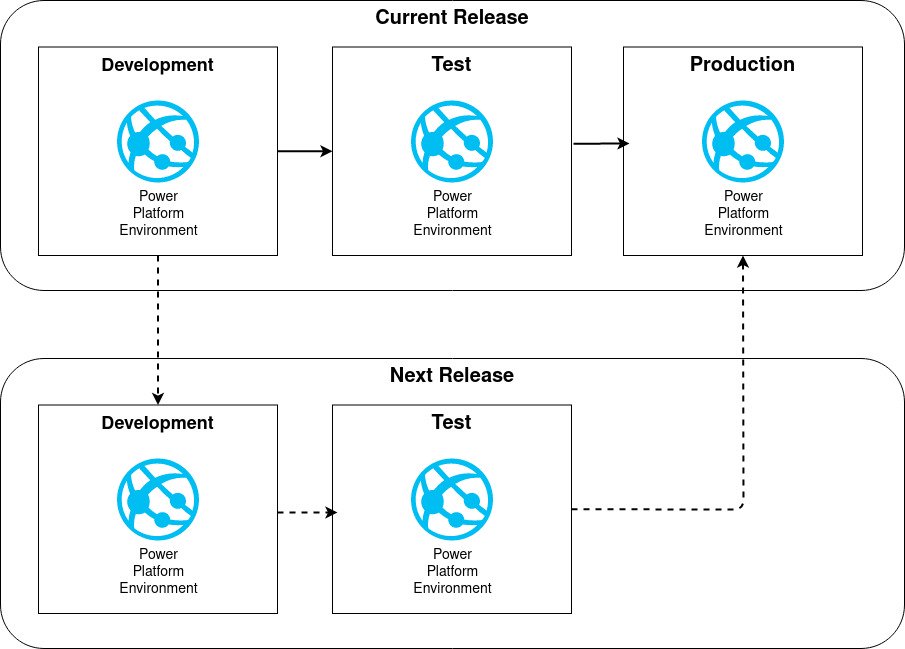
Review of the Book : "Microsoft Power Platform Enterprise Architecture" by Robert Rybaric:
Today's topic of this article is a bit different than probably 99% of all articles on this platform. In fact, a physical printed book is presented. The title of the book is "Microsoft Power Platform Enterprise Architecture" by Robert Rybaric. The content is more or less about all components of the Power Platform. Of course, this ecosystem is rapidly evolving, but I couldn't find any fundamental components that weren't mentioned... except for the fact that the book was written before Microsoft renamed the "Common Dataverse" to "Dataverse". For Microsoft's quirk to give business applications a different name "every two years" the author should not be blamed for.
Some people are now wondering whether they should really still buy a printed book in 2021? This is a private decision, but I think a printed book still has its value in 2021. In the end, I never read any of my purchased tech e-books completely. Who has ever read a 400-page tech book/pdf from start to finish??!
The book is divided into ten main sections and, with 420 pages of content, is also considerably thick. The sections are:
- Microsoft Power Platform and Microsoft Dynamics 365 Overview
- Microsoft 365 and Microsoft Azure Overview
- Understanding Microsoft's Power Platform Architecture
- Tools and Techniques
- Application Lifecycle Management
- Implementation Approach and Methodologies
- Microsoft Power Platform Security
- Microsoft Power Platform Extensibility
- Microsoft Power Platform Integration
- Microsoft Power Platform Data Migration
So as you see the book covers all areas of Power Platform by any stretch of the imagination.
Who should read this book?
So who should actually buy and read such a book?! Well, in the book the author mentions, that the book is mainly targeted at solution- and technical architects, technical specialists working in project implementation plus interested customers. The author also mentions that it's not a beginner's book and certain knowledge of coding, web services, PowerShell, and Microsoft technology is required. However, I would include an important category of people into the target group: Project managers in the Microsoft sphere, especially if they come from a non-tech background and/or cannot code. No matter in which area a project manager works (Dynamics ERP, CRM, or any other app), a basic understanding of all components of the Power Platform as a whole is absolutely needed in my opinion. Otherwise, you consult your customers in your area, for example, Dynamics 365 CE, but are completely blind to what exists right and left. Overall I would consider an experienced consultant would need up to 8 weeks to fully read and absorb what is in the book (if you work full-time). Of course, you can read the book in two weeks, but I think it's better to slow down and fully understand the topics presented + do your own research. Me for example a little sidenote in this book brought me on the right track of realizing real-time Power BI data synch, that ended up in an article I posted recently.
After getting this out of the way, let's start and discuss what's in the book and why you might want to get a copy. Obviously explaining what's in every chapter might end in a 100-page review of a 400 pages book, so I will highlight certain aspects that seem important here. If you also own a piece and want to highlight different aspects you can do so in the comments.
Pro/good points of the book
In this paragraph, I will give some points that I liked as a "pro" for the book. Also on some point, I will give a couple of examples so that the reader gets a better understanding. Firs positive point I recognized is that the book gives, despite "only" 400 pages, a relatively good overview of the entire ecosystem. Holding the book in my hands this seems "not such a big issue". However actually doing it requires a lot of work, knowledge, practical experience, and patience. Also, the author is not only focused on technical things but also covers the most important strategic points, for example, Application Lifecycle Management (ALM) or an entire project management guide that includes explanations of each role. It is explained how you, or a project manager so to speak, should approach a project that has a global scale.
One positive aspect I found useful was the well-thought trade-off between text and diagrams. Sometimes it is easier to show a simple diagram than to explain everything with text, sometimes text is easier, or a combination of both. I will illustrate what I mean by that. On page 107 the author gives the following diagram (slightly modified from Rybaric, R. (2020) p. 107):

This diagram was given by the author as an illustration for a "Multiple release strategy", so basically a project where you need multiple solution- releases at the same time. Therefore multiple development environments are needed. Instead of describing this in an entire page of text a simple diagram like this does the job perfectly.
Another thing I found useful was the fact that yes a large part of the topics are scratched on the surface, but actually, quite a bunch of topics are shown in a little more detail, even sometimes with code examples. That is what I mean in the introduction that a project manager who is not technical (cannot code) should read this book as well. I will give a short, and obviously not complete, list here to illustrate what I mean:
- On page 322 f. PlugIn event handlers are described, including a step-by-step guide on what happens when using the so-called "PlugIn Registration Tool". Also "PreValidation", "PostValidation" and "PostOperation" are explained. Reading those two-three pages will help any project manager/technical consultant to understand what actually happens when meeting with developers.
- Right after PlugIn event handlers, the very important Azure Service Bus is explained. This is again technical and a little abstract if you have never used it before. However very important for modern Dynamics projects.
- Another topic that comes up in projects more and more is the integration of communication tools like Microsoft Teams. This is explained on page 351 f.
- Last but not least on page 366 f. frontend extensibility is explained in some detail. In my opinion, knowing how this works and understanding what "Ajax", "POST", "GET"... means is important for anyone working in the tech sphere.
The last positive point I want to mention here is the constant flow of "tips" and "important notes" in this book. Here you feel that the author understood the topic in-depth and has long experience with this product lineup. Such tips can prove valuable if you keep them in mind while working on a real-world project with a client.
This was only a shortlist of the positive points I found while going through the book. I hope it helped to understand what you get if you get a copy.
Con/Points to improve
Of course, trying something like this book aims to do will result in some points that can be seen critically. However, this is 100% subjective and I acknowledged how difficult it is to put out such a piece.
First of all, I would have really loved to have the option of getting a hardback book. Those "glued" books sooner or later fall apart, which is also not really sustainable (I did get it from Amazon).
Secondly, it might have been a good idea to add 100-150 more pages and go into a little bit more depth at some stages of the book. However, it is clear this is very easily said, but hard to do. Also choosing the same sample company as Microsoft does with "Contoso" seems a bit like the author did not make the effort to create a new one. However, you might argue why we need a sample company at all if this book is not targeted towards beginners. Personally, I would have left this sample company out altogether, but I do understand that it gives newer, and maybe fresh out of college, subject matter experts as a path to follow.
Besides those tho points, I haven't found many references to other books in this subject area, like Pro Microsoft Power Platform, Microsoft Power Apps Cookbook, or the recently published Beginning Power Apps. This is definitely an area where the author has to improve as links to other materials are essential to improve in any area.
Summary
There are other books in this area, but this one is definitely one of the best if you want to get a quick comprehensive overview of every topic in the sphere of Power Platform. The given task to give an overview of a whole area of expertise is incredibly difficult to do, but the author managed to do it, at least in my opinion, well. If needed the author went a little deeper, especially in the more technical parts, and stayed on the surface where a general understanding was sufficient. Besides some small negative points overall I would recommend this book for purchase.
If you made it up to here I did not bore you straight up, ... so thanks for reading and I will keep posting such content here.
Sources:
- Rybaric, R. (2020). Microsoft Power Platform Enterprise Architecture: A guide for architects and decision-makers to craft complex solutions tailored to meet business needs. by Packt Publishing Ltd., Birmingham/United Kingdom
Review of the Book : "Microsoft Power Platform Enterprise Architecture" by Robert Rybaric
Comments
Your review
Hi David, thank you for your review, very nice written and helpful. Please understand, that certain aspects of such book are not in the hands of the author, but rather the publisher. This applies specifically to the # of pages and the overall structure. Let's see whether there will be a second edition, if so, I will try to consider your thoughts.
Edits on book
Hey Robert,
sure I know,.. the publisher dictates many many things. Its well known.
Anyways very good book :-)
Greetings David

